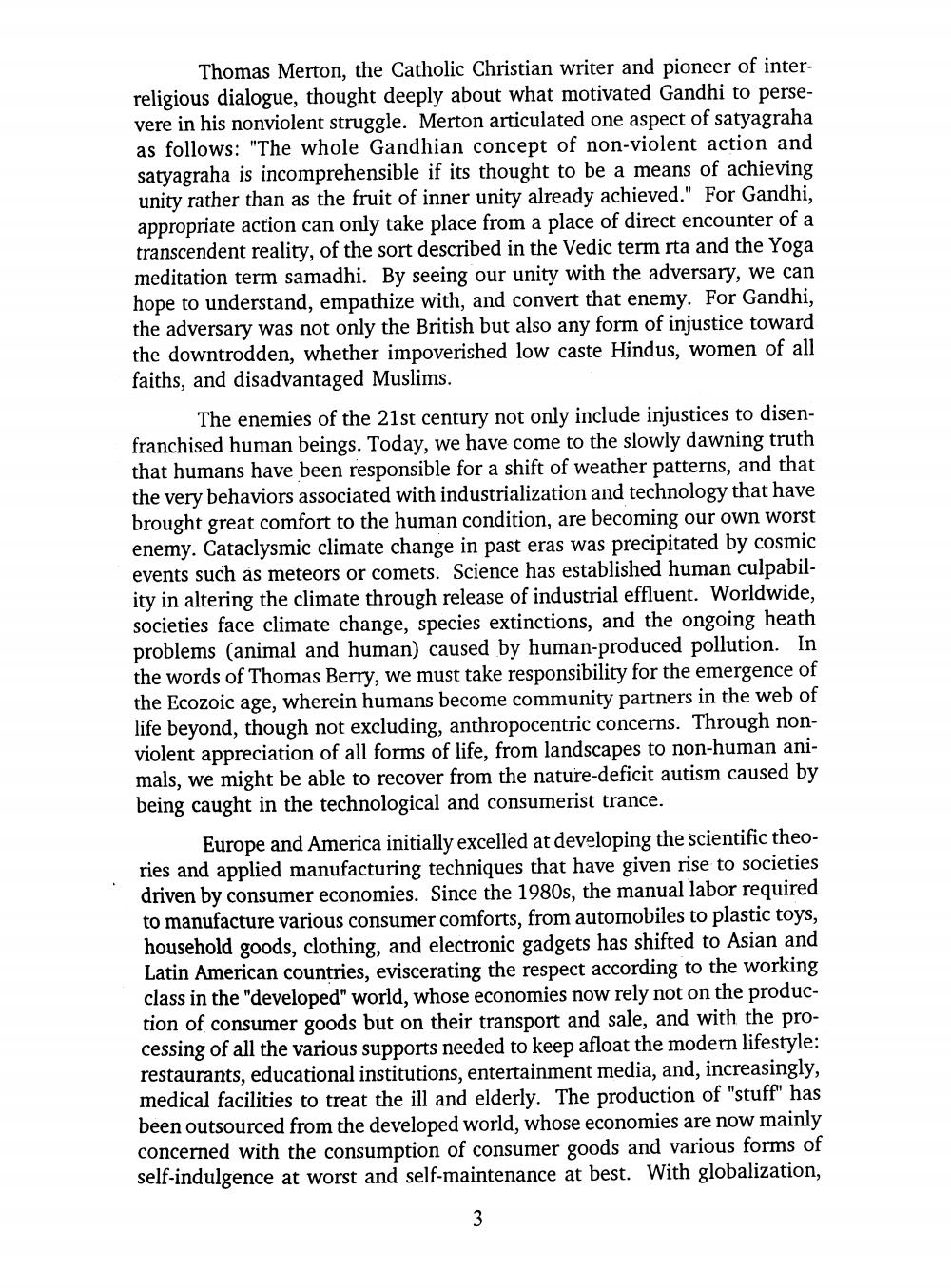________________
Thomas Merton, the Catholic Christian writer and pioneer of interreligious dialogue, thought deeply about what motivated Gandhi to persevere in his nonviolent struggle. Merton articulated one aspect of satyagraha as follows: "The whole Gandhian concept of non-violent action and satyagraha is incomprehensible if its thought to be a means of achieving unity rather than as the fruit of inner unity already achieved." For Gandhi, appropriate action can only take place from a place of direct encounter of a transcendent reality, of the sort described in the Vedic term rta and the Yoga meditation term samadhi. By seeing our unity with the adversary, we can hope to understand, empathize with, and convert that enemy. For Gandhi, the adversary was not only the British but also any form of injustice toward the downtrodden, whether impoverished low caste Hindus, women of all faiths, and disadvantaged Muslims.
The enemies of the 21st century not only include injustices to disenfranchised human beings. Today, we have come to the slowly dawning truth that humans have been responsible for a shift of weather patterns, and that the very behaviors associated with industrialization and technology that have brought great comfort to the human condition, are becoming our own worst enemy. Cataclysmic climate change in past eras was precipitated by cosmic events such as meteors or comets. Science has established human culpability in altering the climate through release of industrial effluent. Worldwide, societies face climate change, species extinctions, and the ongoing heath problems (animal and human) caused by human-produced pollution. In the words of Thomas Berry, we must take responsibility for the emergence of the Ecozoic age, wherein humans become community partners in the web of life beyond, though not excluding, anthropocentric concerns. Through nonviolent appreciation of all forms of life, from landscapes to non-human animals, we might be able to recover from the nature-deficit autism caused by being caught in the technological and consumerist trance.
Europe and America initially excelled at developing the scientific theories and applied manufacturing techniques that have given rise to societies driven by consumer economies. Since the 1980s, the manual labor required to manufacture various consumer comforts, from automobiles to plastic toys, household goods, clothing, and electronic gadgets has shifted to Asian and Latin American countries, eviscerating the respect according to the working class in the "developed" world, whose economies now rely not on the production of consumer goods but on their transport and sale, and with the processing of all the various supports needed to keep afloat the modern lifestyle: restaurants, educational institutions, entertainment media, and, increasingly, medical facilities to treat the ill and elderly. The production of "stuff" has been outsourced from the developed world, whose economies are now mainly concerned with the consumption of consumer goods and various forms of self-indulgence at worst and self-maintenance at best. With globalization,
3




